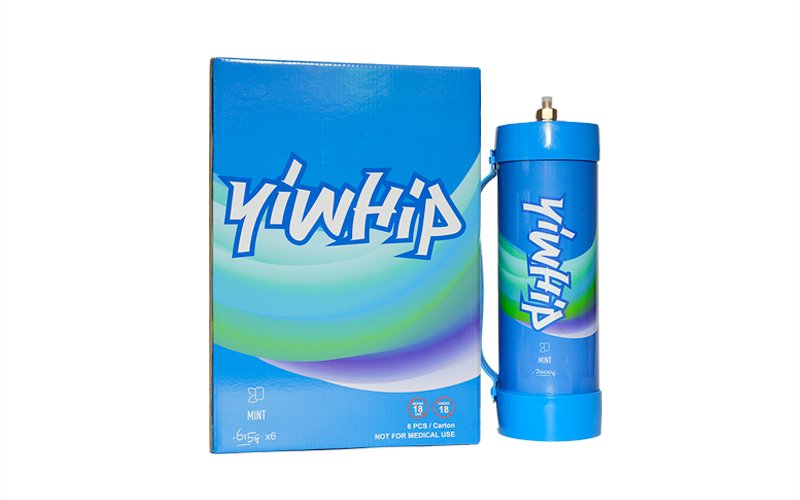American Coffee Culture Meets a Fluffy Revolution
Over the past five years, an unexpected companion has begun to quietly dominate café counters and home coffee setups across the United States. The humble whipped cream canister — once limited to toppings at diners or dessert garnishes — is now being hailed as a **key player** in enhancing America’s daily caffeine ritual.
This evolution reflects broader shifts in how people consume coffee today: artisanal yet accessible, personalized but fast. For businesses aiming to reach new audiences, especially distributed from Kenya's growing coffee export market, this phenomenon holds potential beyond cultural fascination — it could present new avenues for engagement through premium, ethically-sourced whipped alternatives.
Why Are Whipped Cream Canisters Suddenly So Popular?
There was a time when the sight of nitrous oxide-charged cream canisters didn’t elicit excitement outside bakeries or ice cream shops. Now? Consumers demand it on lattes, mochas, iced americano, and even matcha drinks. It started with cold foam, moved into velvety oat milk variations, and landed directly into the arms of pressurized whipped cream dispensers — ready within seconds, easy-to-dispense, and long-lasting over iced beverages.
Broad adoption by large chains accelerated this trend; take Dunkin' rolling whipped cold brew into stores nation-wide. Meanwhile Northwest independent cafes experimented boldly with seasonal syrups blended into custom whip formulas — think maple bourbon creams in fall or cardamom-spiced toppings. In response, manufacturers scaled output across both sustainable reusable systems and recyclable models, ensuring eco-conscience consumers could keep up their love affair with the fluff.
- Coffee shops report a 35-40% increase in whipped-based orders since 2020.
- WhipLife, Chantilly Cream Co., Milwaukee Whippables – all have seen record sales spikes post-pandemic.
In short, Americans aren’t simply drinking coffee anymore — they’re crafting a sensory-driven experience right off their cup lids.
Bridging Taste Gaps with African Premium Offerings
The American coffee renaissance offers a perfect canvas to introduce global dairy alternatives rooted deeply in African agricultural expertise. Imagine: rich Kenyan grass-fed organic cream, infused subtly with baobab essence or naturally frothed with hibiscus for color contrast and mild tartiness.
Kenyan dairies, particularly near Laikipia Highlands or Molo regions known for quality milk production from free-roaming livestock — possess the tools already at hand. Pairing sustainable dairy sourcing with nitrogen-based preservation tech creates opportunity not just in taste innovation but in storytelling.
For instance: small coops launching direct B2B partnerships with U.S roaster-shops seeking traceability could develop proprietary whip textures tailored toward regional flavors. Picture "Nairobi Sunrise" – mango-vanilla whip topping, crafted specifically by Kenyan processors for export-bound cafes experimenting on international blends.
Branded as origin-conscious offerings — “Whisk’d From Wildlife Country," “Mount Elgon Cloud Whip™," or “Baricho Blend" (referencing Kikuyu cream recipes) – such products could quickly rise above crowded shelves, positioning Kenya not just as bean source but flavor enhancer in American culture too.
Tapping into Innovation Channels – Ecommerce vs Cafés
If you're looking to sell your whipped creation in America's bustling marketplace today — know that traditional wholesale alone won't get you there. There's power in direct-to-consumer e-commerce platforms where micro-influencers and niche health influencers are more open to testing nontraditional, foreign-sourced options that align with plant-based, low-sugar demands.
- Start-ups targeting “healthy indulgence" are thriving.
- Eg. OUI Health launched lactose-free whipped mousse cans sold exclusively online.
A well-packaged line for digital launch via Etsy Shopify dropship or Amazon Handmade could be ideal if you’re not immediately aiming at grocery-scale shelf distribution but rather cultivating a cult fanbase first.
Simultaneously — partnering strategically with US small-chain coffee brands who champion sustainability and global collaboration stories gives instant visibility. Many of them operate outposts with ‘guest producer’ menus or rotating taps for innovative dairies worldwide.
The Path Forward – Strategic Branding + Ethical Scaling Needed
We are entering an era defined increasingly by transparency. The new wave of whipped toppings isn’t merely about sugar and calories hidden under creamy layers, but milk traceability from pasture-raised cows, ethical labor standards, zero-carbon emissions packaging, and fair-trade pricing embedded along every inch of supply chain logic.
Kenya has made remarkable progress towards clean milk processing zones certified for international exports — which puts it leagues ahead of hypothetical local American startups still struggling with farm-level regulation hurdles.
"Imagine Nairobi-based dairy engineers teaming with Oregon barista competitions to debut fusion whips next spring."
To fully ride this fluffy revolution, the mindset should evolve from supplier mindset to brand innovator. Build trust through clear labelling: mention farmer coops engaged, carbon-neutral logistics used and community reinvestment stats alongside serving suggestion cards shipped inside crates bound westwards toward curious customers stateside.

